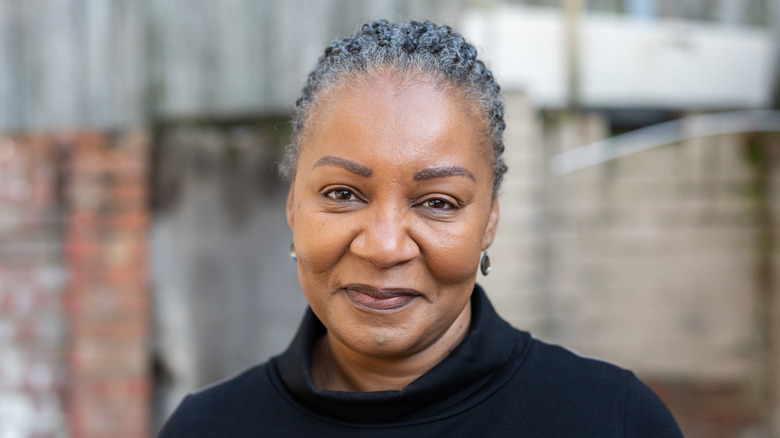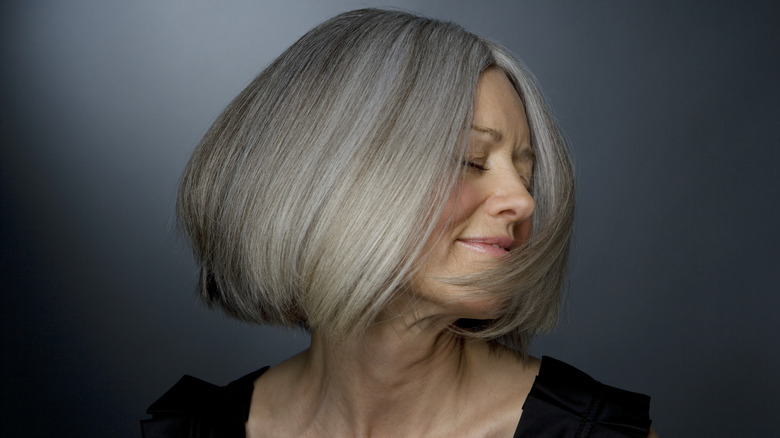What Is The Average Age To Get Gray Hair?
We may receive a commission on purchases made from links.
We have many terms for those gray hairs that pop up on our scalp as we age. Whether you refer to your grays as frosty, salt and pepper, or silvery, our newly grayed strands are outward signs that the aging process has begun. While many dread seeing these little signs of age and experience, some people embrace the gray look, and experiment with the hairstyles the new color invites. Regardless of the type of hair you have, gray hair happens to almost all of us as our hair follicles produce less color as we age (via Harvard Medical School).
Whether you hate it or embrace it, gray hair is a fact of life. When you see a silvery strand make its initial appearance, you can bet more are coming. Although there are many products on the market to help you care for your new grays, this fact has many wondering how much time they have before the gray strands start to make an appearance. The answer is complex and dependent on many factors.
What factors go into graying hair?
When wondering about the average age people turn gray, the answers are vast. Vegamour mentions that once our hair follicles produce our hair, we have a set hair color. As we age, our hair follicles produce less color, and new hair is more likely to grow in gray. However, aging isn't the only factor. Stress, illness, nutrition, and genetics also dictate when a person's hair will turn gray. A 2021 study by Cell Biology found that mental stress actually caused gray hair to grow. The good news about stress-affected grays is that graying can often be reversed if the stress is relieved.
Other factors that play a part in the age you'll start to gray include race and ethnicity. A 2021 study published in the Journal of Clinical and Aesthetic Dermatology showed that the average age for Caucasians to gray is in their mid-30s, while people of Asian decent tend to gray in their late 30s. In addition, people of African descent don't often gray until about their mid-40s. There are, of course, outliers to the average ages of people finding gray hair, but once you find one gray hair, you can be sure more are on their way.
What to do about graying hair
When you notice those silvery gray strands starting to show, there are some options for dealing with them. It is true that if your graying is due to health or stress, you may be able to reverse the graying by changing your health habits and level of stress. In addition, there is always the option to dye your hair. However, some seek a more aggressive approach called gene therapy. According to The Tech Interactive, the future could see scientists using hair pigment genes to stimulate hair color in gray adults. However, gene experimentation is currently only used for "life and death" situations and not for cosmetic reasons. So don't hold out for this option!
Going gray is an adjustment for most people. According to a 2019 study published in the science journal Cureus, gray hair can take a toll on your self-esteem. If you aren't ready to celebrate the onset of your gray hair just yet, get creative with color and make yourself feel as beautiful as you are. Otherwise, try to have fun with it and embrace the new styles that come with it, per Hair Adviser. Because graying, in most cases, is a natural process.


